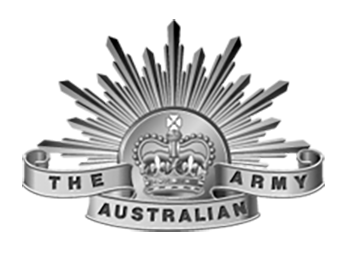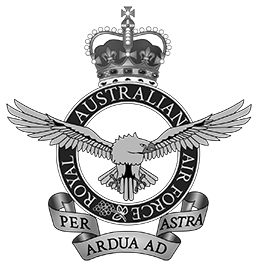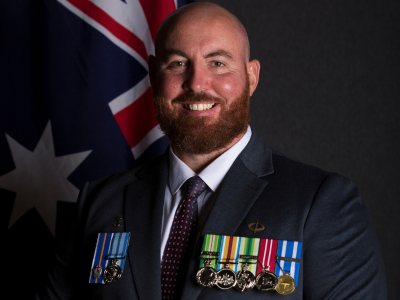Explore the evolution of Australian military service through the personal stories of NSW service.
Exhibition design team X Squared Design has organised the gallery to echo the experiences of the men and women of NSW who have left our shores for war or peacekeeping activites and, indeed, the architecture of the original Memorial building.
A cohesive and legible design approach has produced the seamless integration of object, graphic, multimedia and interactive platforms. Digital technology through which the collection of testimony, original artefacts, documents and documentary footage is displayed and interpreted complements the static displays. The exhibition does not attempt to provide an encyclopaedic history of NSW at war. Rather, it is the stories of individuals – sailors, soldiers, medical personnel and airmen and airwomen – as case studies to put a human face to the experience of war or deployment on peacekeeping operations and allow the visitor to make an emotional connection to the exhibition content.
Treasures on display include a rare collection of historic swords, pistols, medals and other artefacts belonging to Australia’s first general, Sir Maurice O’Connell from the early 1800s; the hauntingly poignant medals and memorabilia kept by the family of 15-year-old Lance Corporal Jack Harris of Waverly in Sydney who was killed in action at the Battle of Lone Pine; a souvenir of the Red Baron in the form of a piece of fabric cut from the wreck of the Baron’s plane by 26-year-old Second Lieutenant Nigel Love of Kurrajong, NSW, a fighter pilot with No3 Squadron Australian Flying Corps on the Western Front in 1918; and the Distinguished Service Cross awarded to Sub-Lieutenant Bruce Harvey for sinking the only Japanese fleet submarine destroyed in Australian waters.
Virtual exhibition
Explore the exhibition from through the virtual gallery below. Start your journey by clicking on the play button.
The design and content for the exhibition has been inspired by the Memorial’s buttress sculptures, which depict the wide-ranging military roles performed by Australians in the First World War. The replica statues were created using 3D printing by Studio Kite at its NSW north-coast workshop. The originals were digitally 3D scanned with the reproductions 3D printed in ABS plastic, the same material car bumper bars are commonly made from. The raw sculptures were then filled, sanded, sculpted and painted to achieve the required fine detail.
The exhibition explains how the uniform and equipment used during the Great War has evolved through the stories of 21st century ADF personnel and their families.
Warrant Officer 2 Roy Mundine of the Bundjalung people served in Malaya in 1959 with 1 RAR, and two tours in South Vietnam with 5RAR. Roy lost a leg and was mentioned in despatches for bravery during an attack on a Vietcong bunker complex in 1969.
Able Seaman Kerrin Humphrey served aboard HMAS Kanimbla on Operation Quickstep and HMAS Melbourne on Operation Slipper in the Persian Gulf in 2011.
WO1 Cheryl Elston joined the Australian Army Medical Corps in 1993. In 1994 she was part of the advanced party of the first rotation to Rwanda as medical support to UNAMIR. She has served on ADF humanitarian missions in the Pacific.
Lieutenant Nigel Love joined the Australian Flying Corps and trained in Richmond, New South Wales. He completed advanced training in Britain and was posted to No. 3 Squadron, AFC, on operations over the Somme, France, in 1918.
You can view more interviews like these on the Anzac Memorial's YouTube channel.
Interviewees
Garth Callender - Cavalry officer, Australian Army
Allan Croft - Public affairs office, Australian Army
Gwen Cherne - Widow of 2nd Commando Regiment veteran
John Hutcheson MC ACM TSM - Engineer officer, Royal Australian Engineers
Major "R" - 2nd Commando Regiment, Australian Army
Philippa Weiland - Senior psychologist, Australian Army















